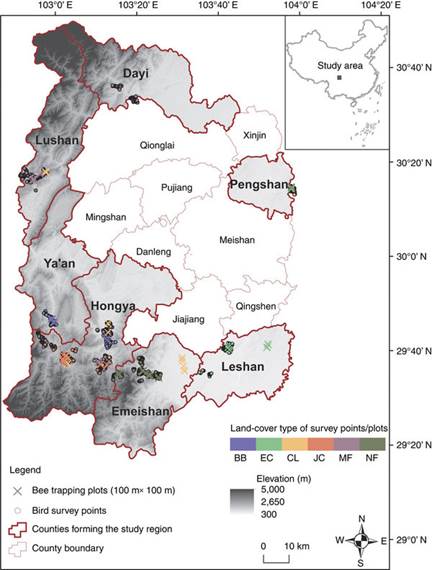

一项研究提出,更普遍地种植不同种类的树木能提高中国退耕还林计划的生物多样性收益。目前,许多地区都在使用单一树种造林,比如桉树、竹子和柳杉,但缺少树木多样性无法提升鸟类多样性。
中国退耕还林计划是全世界规模最大的造林计划,截至2013年共占地近2800万公顷。这一项目补贴农户在坡地上的耕地或灌丛改种树、草,以生产木材或其他可收获的植物。
美 国新泽西州普林斯顿大学华方圆及同事发现,中国各地的退耕还林林地往往只种植一种树木,种植两到五种树木的更少一些,只在极少情况下选择原先的天然林树 种。在调查四川省的退耕还林林地后,研究者发现相比于耕地,单一种植林地的鸟类多样性更低,而混合林则能提高鸟类多样性。研究认为,推广混合林能带来生物 多样性收益,且不需增加农户额外成本或大幅调整政策。(来源:生物通)
Opportunities for biodiversity gains under the world’s largest reforestation programme
Reforestation is a critical means of addressing the environmental and social problems of deforestation. China’s Grain-for-Green Program (GFGP) is the world’s largest reforestation scheme. Here we provide the first nationwide assessment of the tree composition of GFGP forests and the first combined ecological and economic study aimed at understanding GFGP’s biodiversity implications. Across China, GFGP forests are overwhelmingly monocultures or compositionally simple mixed forests. Focusing on birds and bees in Sichuan Province, we find that GFGP reforestation results in modest gains (via mixed forest) and losses (via monocultures) of bird diversity, along with major losses of bee diversity. Moreover, all current modes of GFGP reforestation fall short of restoring biodiversity to levels approximating native forests. However, even within existing modes of reforestation, GFGP can achieve greater biodiversity gains by promoting mixed forests over monocultures; doing so is unlikely to entail major opportunity costs or pose unforeseen economic risks to households.
原文链接:http://www.nature.com/ncomms/2016/160906/ncomms12717/pdf/ncomms12717.pdf



